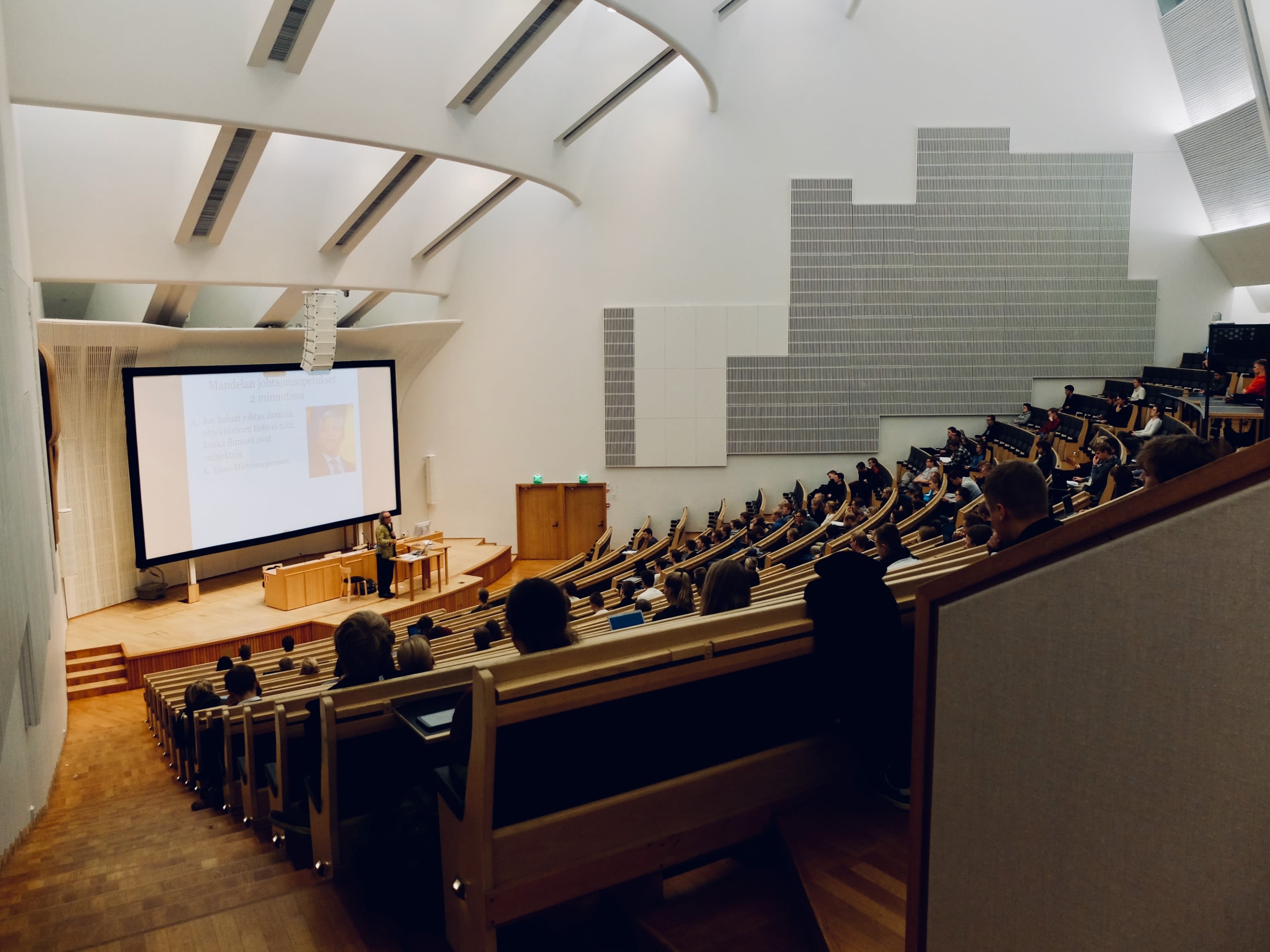What We Can Learn From the Evolution of Education Technology
Higher-ed tech isn't stopping for anyone

While many students pursue higher education to lay the groundwork for future careers in technology and innovation, the higher education system itself is not often thought of as cutting-edge. The U.S. has a rich history that has built and maintained multiple world-renowned collegiate institutions — yet the very history and culture that created these monuments can also hinder their ability to adapt. This paradox requires administrators, institutional effectiveness leaders, and the higher ed industry as a whole to continually work to strike the perfect balance between tradition and progress.
In the New York Times article “How Technology Is Changing the Future of Higher Education,” Gordon Jones, founding dean of the Boise State University College of Innovation and Design, remarked on this dichotomy. He stated that, though universities may be at the forefront of research in almost every field, when it comes to reconsidering their own structure, “they’ve been very risk-averse.” For better or worse, higher education is notoriously resistant to change.
The COVID-19 pandemic gave institutions no choice but to change. Seemingly overnight these vestiges of traditional learning had to adapt to online classrooms and distance education. Though instructors and students were the faces of these changes, the pandemic altered entire institutional structures, impacting essential, behind-the-scenes responsibilities like accreditation prep, student success, and programmatic review.
Now, years after the initial wave of the pandemic, many higher ed professionals are questioning how they can take the learnings from COVID-19 to guide the future viability of their institution. Despite the pandemic accelerating the rate of technological adoption, the seeds of that technology can be found decades, even centuries prior. Perhaps the answer to the future lies in the past.

The Surprisingly Long History of Distance Learning

While today one would consider distance education to be synonymous with virtual education, the origins of distance learning far predate the internet. In the United States, the first institutionally sponsored distance education program began in 1874 at Illinois Wesleyan University. They offered external degrees to non-local students to expand the reach of higher education, but the term “distance education” wasn’t officially coined until 1892 by the University of Wisconsin - Madison.1 In both instances, courses were conducted through letter writing; instructors would send a letter with learning materials and assignment prompts, and students would respond by sending their work through the postal service. What today can happen in a matter of seconds through tools like Zoom, Google Classroom, and learning management systems (LMS) would sometimes take over two weeks in the 19th century.
Higher education institutions have been instrumental in developing countless technologies that have not only improved academia, but have also had an incredible impact on daily life. In 1960 the University of Illinois Urbana Champagne was responsible for developing the operating system PLATO, meaning “Programmed Logic for Automated Teaching Operations.” PLATO is the origin of the LMS, first being used for instruction at Orange Coast College in 1963.
This incredible technology had implications far beyond the classroom — PLATO set the stage for a series of advancements throughout the 60s and 70s that ultimately led to the development of the internet. In 1993, computer scientist Tim Berners-Lee released the code for the first web browser and editor, altering human communication and academia forever. LMSs could grow in complexity and utility, and as more students gained access to the internet, the possibilities for distance learning were seemingly endless.
Each of these advancements contributed to the development of future technology that helped colleges and universities operate during COVID-19. Yet the pandemic also brought to light the higher education processes that failed to adapt to the “new normal” — processes that are virtually unseen to those outside them. Self-study and assessment, accreditation and reaffirmation, and the collection of student feedback are necessary processes that, though may feel removed from student life, have a significant impact on student success.
Without the right tools, these processes can look like binders and filing cabinets filled with unindexed data, static Excel sheets that can’t reliably communicate real-time information, and paper-based course evaluations that are tedious to analyze. But hidden in these broken processes lies opportunity.

Where Higher-Ed Tech is Leading Us

The next evolution in higher education technology is a solution that can streamline all of these disjointed responsibilities and provide impactful insights. For this tool to be effective, it requires cross-departmental cooperation, buy-in from administrators and faculty, and a long-term vision for how the product will be used. Institutions must change both their internal structures and their day-to-day workflows, and this can be a tough case to make. But is there an alternative?
According to Alex Leader, Chief Impact Officer of Watermark and long-time tech innovator, there isn’t. After seeing how quickly higher education could incorporate technology during COVID-19, student expectations have been permanently altered. “There is a need to create high-performing institutions that can change and continuously improve at a rapid pace, while ensuring that they can maintain their quality education and accreditation, and also support students along the way.” It’s a tall order, but one that can be more easily achieved when breaking down technological and institutional silos.

Alex Leader, Chief Impact Officer, Watermark
Alex Leader, Chief Impact Officer, Watermark
Leader continues, “Institutions historically have had digital sprawl, where over time they’ve purchased solutions that solve one particular pain point without solving the overarching challenges that exist. An institution could have 20 to 50 core software solutions that don't talk to each other, that can’t exchange data. It's created all sorts of problems, not only with the amount of expenditure in terms of dollars, but in terms of decreasing productivity of staff, coupled with a more limited view of how the institution is performing overall.”
These results can cause institutions to push back against progress, and gain a false sense of nostalgia for the pre-tech processes of yesteryear. But the reality is that higher ed enrollment is declining, and keeping with the status quo could lead to campuses shutting their doors for good. Institutions must do everything they can to support their students, not only to create a generation of well-rounded, educated individuals, but also to preserve the schools themselves.
“This is the goal of an Educational Impact Suite (EIS),” Leader says. “In one hub, institutional effectiveness and student success leaders can effectively view and analyze insights to achieve the best outcomes for not only their institution, but the students they support and the communities they serve.”
If there is one thing the past teaches us, it is that progress has no reverence for tradition. Colleges and universities that embrace new technology and streamline their internal processes will not only survive the current times, but set themselves up to thrive for years to come.

About Watermark
Watermark promotes excellence in higher education through its innovative Educational Impact Suite (EIS). With tools for accreditation management, faculty activity reporting, course evaluations and surveys, curriculum and catalog management, and student success and retention, Watermark supports over 1,700 higher ed institutions around the world. To learn more about Watermark, visit watermarkinsights.com.

About the Author
Barb Jackson is a content manager with a concentration in higher education. Writing on topics like accreditation and industry trends, Barb is particularly interested in how higher ed institutions can better engage underrepresented students. Email Barb at bjackson@watermarkinsights.com or contact her on LinkedIn.
This content was paid for and created by Watermark. The editorial staff at The Chronicle had no role in its preparation. Find out more about paid content.



